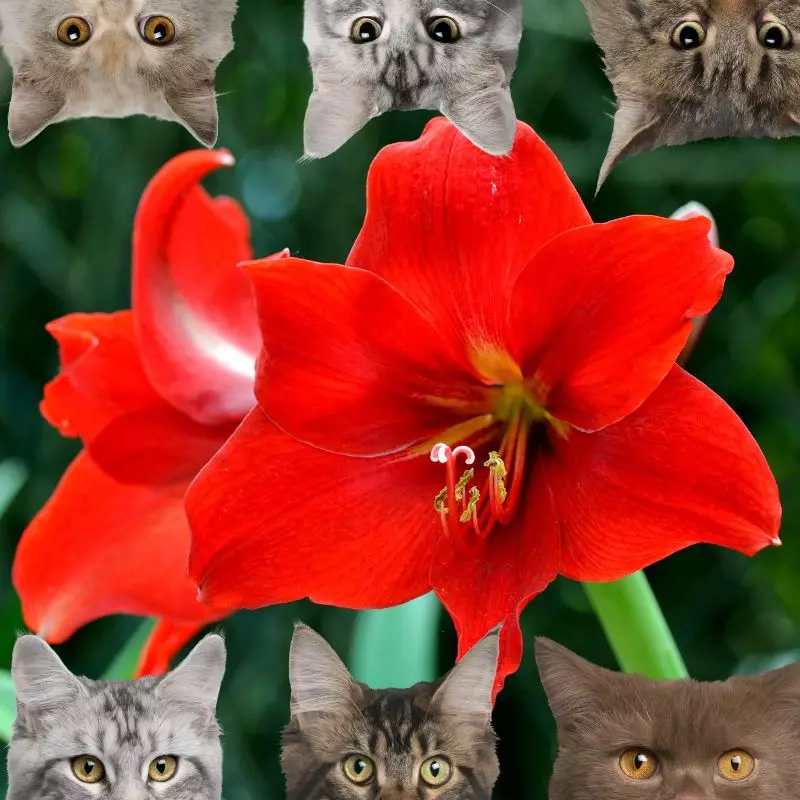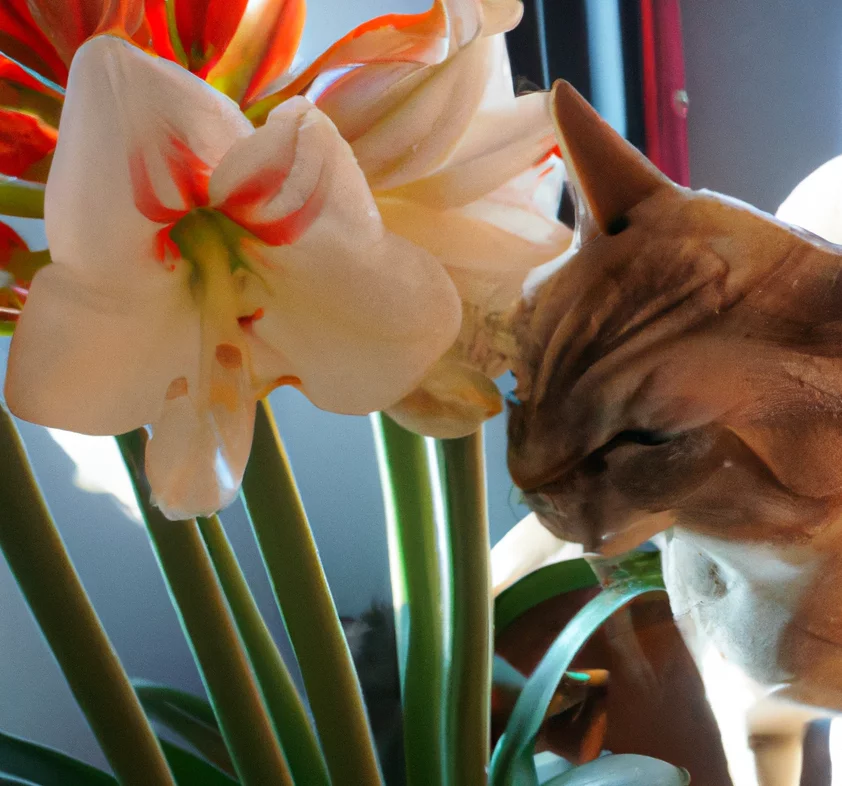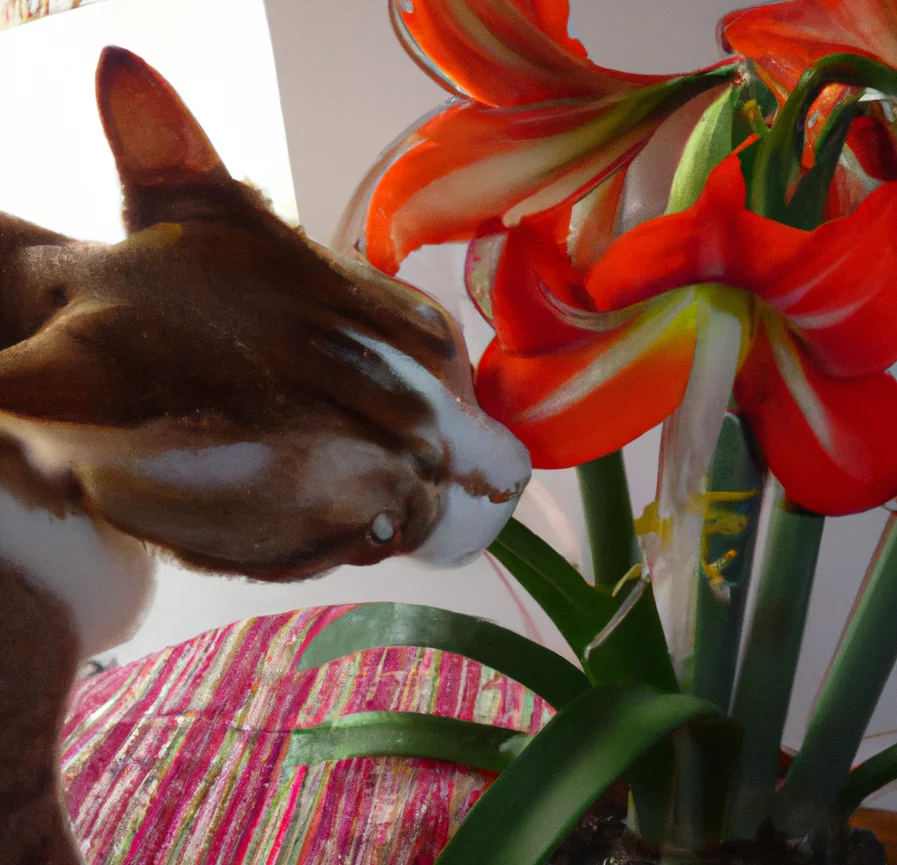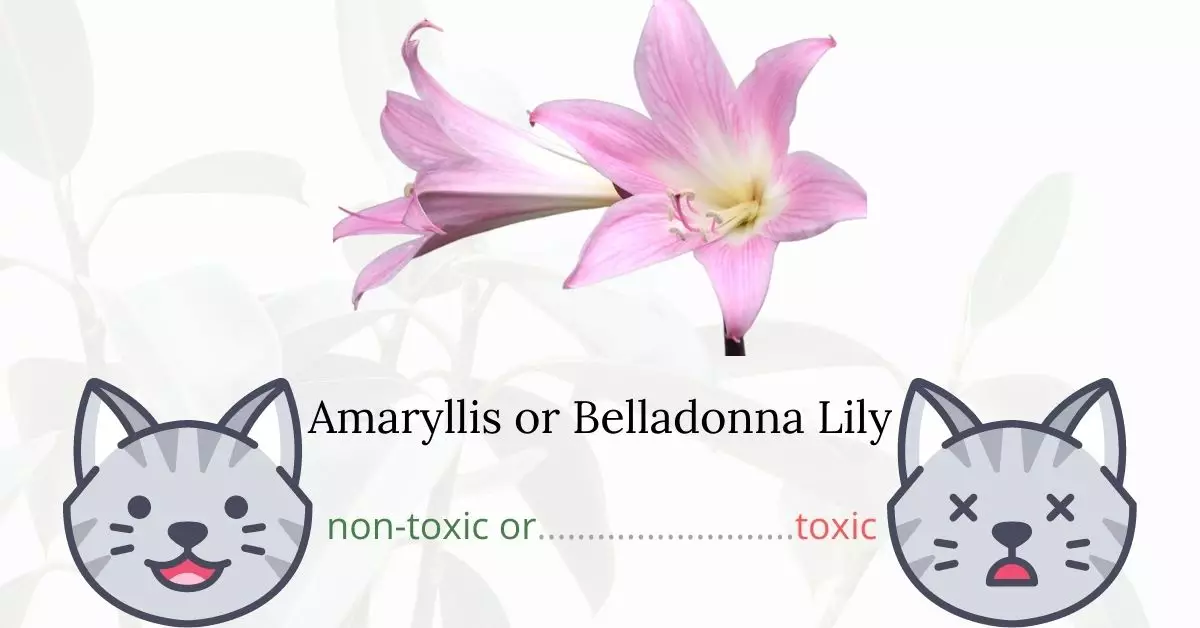Yes, Amaryllis, also known as Belladonna Lily, Saint Joseph Lily, Cape Belladonna, and Naked Lady, is toxic to cats. It contains a substance called lycorine, which is poisonous not only to cats but also to humans.
This article was meticulously crafted in collaboration with a team of experienced DVMs (doctors of veterinary medicine). Their expert insights have enabled us to deliver accurate and up-to-date information regarding the potential risks various plants, like Amaryllis, pose to cats. Furthermore, to ensure the precision of our content, we have also referred to high-authority websites such as ASPCA and PetMD for every plant discussed.
Clinical Signs of Amaryllis Plant Poisoning in Cats

When cats come into contact with, inhale the aroma of, or ingest parts of the Amaryllis plant, they can exhibit a range of symptoms. These symptoms are indicative of the cat’s body reacting to the toxic compounds present in the plant, primarily lycorine. The magnitude of the poisoning depends on the specific part of the plant consumed and the quantity ingested. Notably, the bulbs of the amaryllis plant hold the highest concentration of lycorine, making them the most dangerous part. Here’s a breakdown of the clinical signs and their underlying causes:
- Vomiting: This is the body’s immediate response to eliminate the ingested toxins. Vomiting is triggered by the irritation of the stomach lining and the body’s natural reflex to expel harmful substances.
- Respiratory Depression: The toxic compounds can interfere with the respiratory system, causing a reduction in the cat’s breathing rate or depth.
- Diarrhea: Similar to vomiting, diarrhea is a means for the body to rid itself of harmful substances, particularly when the toxins have moved further down the digestive tract.
- Hypotension (Low Blood Pressure): The toxins can affect the cardiovascular system, leading to a drop in blood pressure.
- Lethargy: The energy levels of the cat can drop due to the body redirecting its resources to combat the ingested toxins.
- Abdominal Pain: The digestive system’s irritation can manifest as abdominal discomfort or pain for the feline.
- Hypersalivation: The body’s initial response to any irritant or toxic substance can be increased salivation, as it tries to protect the oral cavity and potentially dilute or expel the harmful agents.
- Anorexia (Loss of Appetite): The cat may avoid eating due to the discomfort or nausea induced by the toxins.
- Tremors: Neurological effects might be seen as the toxic compounds interfere with the nervous system, causing involuntary muscle movements or tremors.
If you observe any of these signs in your cat after contact with the Amaryllis plant, it is essential to consult a veterinarian immediately.
First Aid and Treatment of Amaryllis Plant Poisoning in Cats

Expelling the plant from your cat’s system is important. If your cat is found to have ingested an amaryllis plant, you should remove the residues from his or her mouth. Should the symptoms that your cat manifests are severe, contact a veterinarian right away to ask for medical assistance. The veterinarian can assist in the removal of plant residues from your cat’s stomach as well as give symptomatic relief for vomiting or diarrhea. Your cat may need IV fluids to recover from dehydration if he or she lost a lot of fluid due to vomiting.
Recovery from Amaryllis Plant Poisoning in Cats

Unless your feline consumed a large amount of the amaryllis flower, the chances of making a full recovery are extremely high, even without veterinary intervention. Prompt treatment is important to prevent the worse effects of toxicity.
Prevention of Amaryllis Plant Poisoning in Cats
Amaryllis is very common so you cannot totally avoid it. It is highly possible to receive amaryllis as a gift. Make sure to put them in a high place or in an off-limits room. If amaryllis grows within your neighborhood, keep an eye on your cat when he or she is outdoors or better if you can keep him or her busy indoors.
If you love plants but have cats at home, check out these lists:





